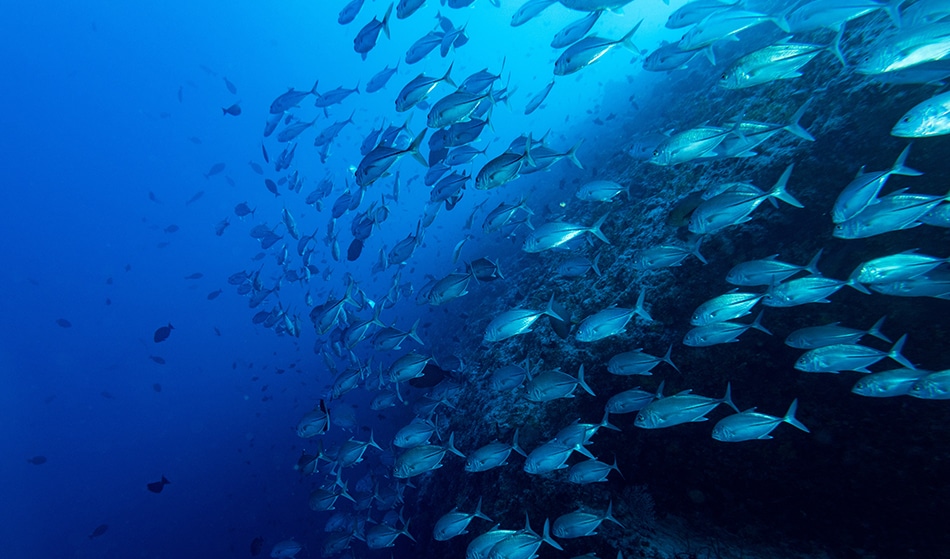 By Isabelle Robinson, M.Sc.Jun 8 2018
By Isabelle Robinson, M.Sc.Jun 8 2018MIT has developed a specialized robotic fish named SoFi to observe and track the most elusive marine animals.

Image credit: Andrea Izzotti/Shutterstock
Given obvious obstacles, scientists find it almost impossible to observe some types of marine life. Recently, the Greenland shark was caught on camera for the first time, despite living for more than 400 years. Scientists believe that with the use of robotics, tracking marine animals, like the Greenland shark, will become easier in the future.
The Massachusetts Institute of Technology’s rubber fish, currently swimming in Fiji’s Rainbow Reef, is operated remotely using a Super Nintendo Controller and is the most recent in fish-monitoring robotics.
In a new research paper published by MIT’s Computer Science and Artificial Laboratory explains that "Current robotic prototypes do not provide adequate platforms for studying marine life in their natural habitats.” The academics suggest that the existing technology contain propulsion systems that “generate substantial turbulence.” This is thought to scare away the marine life and therefore make it impossible to observe them.
Therefore, creating a robot that does not rely on this system was imperative. The MIT research team explains that "A diver can direct the fish by sending commands such as speed, turning angle, and dynamic vertical diving.” The robotic fish can dive to 18 meters and can swim without a motor for 40 minutes maximum. The small robot is described as a “mobile underwater observatory” by its creators.
A diver can control SoFi using a Nintendo controller which is contained in a tough, oil-filled shell. This allows the device to handle deep water pressure without breaking. The controller emits ultrasonic waves which can be read by a Raspberry Pi before it is amplified to reach SoFi.
SoFi has a shell made of silicone rubber, and the robotic fish consists of a receiver that allows the diver to communicate with SoFi. In addition to this, there is a buoyancy sensor, a DC motor, and a displacement tail. The latter of which creates movement in the robot’s tail. The DC motor allows water to be pumped into the chambers of SoFi’s tail, forcing it out and propelling the fish forward. Furthermore, the robot is aptly equipped with a fish-eye camera. The camera captures images and videos for scientists to review.
SoFi is currently undergoing tests in Fiji’s Rainbow Reef and has proven to be able to swim, on average, 296.8m in a straight line per dive. More importantly, the fish did not scare away the other schools of fish. The robotic fish has completed six tests in the Somosomo Strait in Taveuni. It was found that the diver could be 10 meters away from Sofi and still be able to control the fish. However, if the ultrasonic waves do not reach the fish, the creature enters a dormant state, floating in the water.
"Multiple fish swim parallel to the robot a few centimeters below it and also pass a few centimeters in front of its lens," The research team describes. "The fish did not appear to change their swimming trajectory as SoFi approached them in these cases, suggesting that SoFi has the potential to integrate into the natural underwater environment."
This story is reprinted from material from wired.co.uk, with editorial changes made by Azo Network. The original article can be found here.
Disclaimer: The views expressed here are those of the author expressed in their private capacity and do not necessarily represent the views of AZoM.com Limited T/A AZoNetwork the owner and operator of this website. This disclaimer forms part of the Terms and conditions of use of this website.